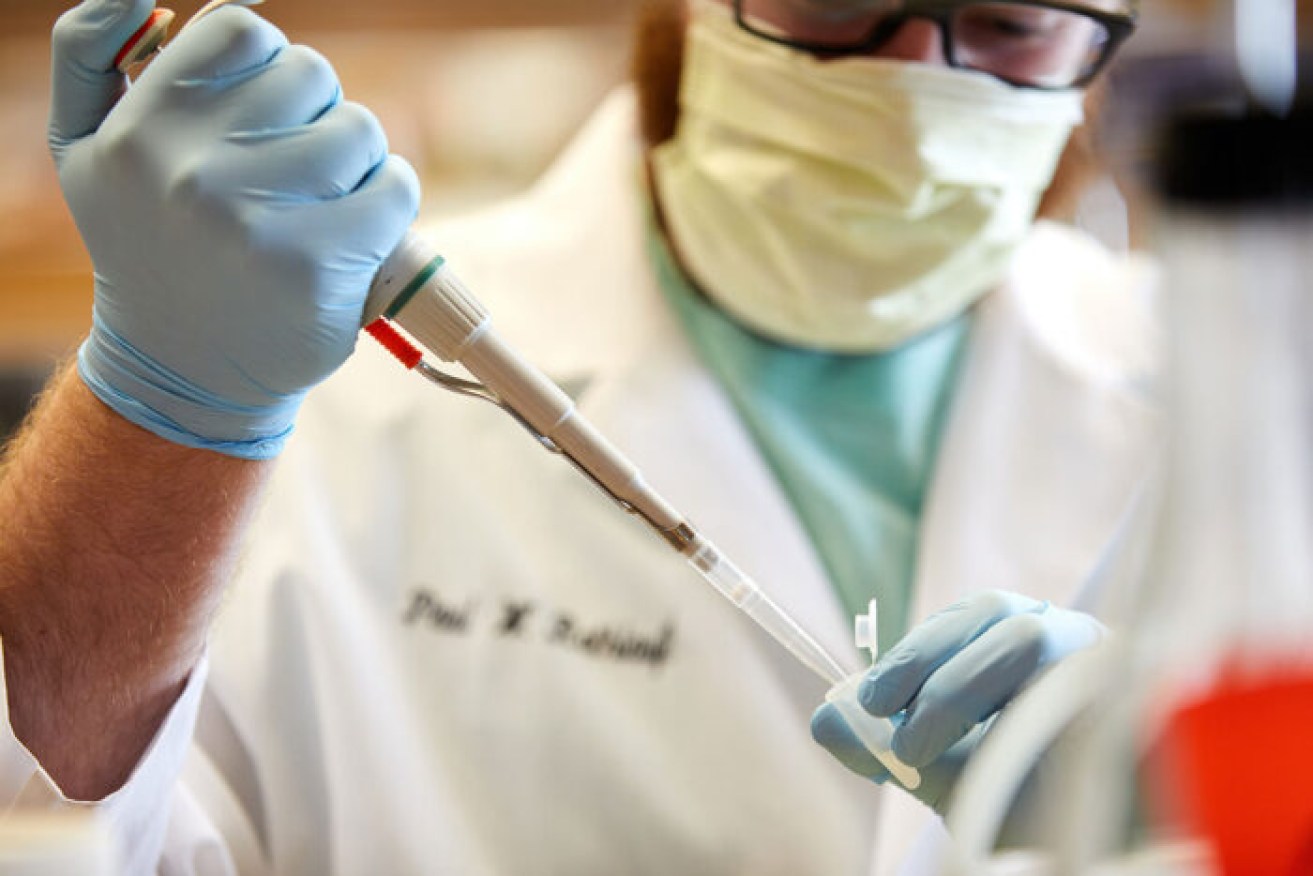Cooked up in a lab, harmless COVID lookalike could be key to a vaccine


Paul Rothlauf, a visiting scientist at Washington University School of Medicine, works with the new lab-made virus. Photo: Washington University
Researchers have created a toothless version of the SARS-CoV-2 virus – it infects cells and interacts with antibodies in the same way as the coronavirus, but it lacks the ability to cause severe disease.
This opens up COVID-19 research to scientists who have no access to costly high-level bio-safety facilities, because the proxy coronavirus can be handled safely in ordinary laboratory conditions.
Ordinarily, scientists are required to wear full-body biohazard suits with pressurized respirators, and work inside laboratories with multiple containment levels and specialized ventilation systems.
The lab-made virus is also being investigated as a potential vaccination candidate.
News of the breakthrough travelled fast
Washington University School of Medicine, where the virus was developed, has been swamped with requests from researchers around the world for samples of the bug.

Virologist Sean Whelan, head of the Department of Molecular Microbiology at Washington University School of Medicine in St Louis. Photo: Washington University
“I’ve never had this many requests for a scientific material in such a short period of time,” said co-senior author Dr Sean Whelan, the Marvin A. Brennecke Distinguished Professor and head of the Department of Molecular Microbiology.
“We’ve distributed the virus to researchers in Argentina, Brazil, Mexico, Canada and, of course, all over the US. We have requests pending from the UK and Germany. Even before we published, people heard that we were working on this and started requesting the material.”
How did they do it?
According to a statement from Washington University, to create a model of SARS-CoV-2 that would be safer to handle, they started with the vesicular stomatitis virus (VSV).
This virus is a “workhorse of virology labs because it is fairly innocuous and easy to manipulate genetically.”
Primarily a virus of cattle, horses and pigs, VSV occasionally infects people, “causing a mild flu-like illness that lasts three to five days.”
Viruses have proteins on their surfaces that they use to latch onto and infect cells. The researchers removed VSV’s surface-protein gene and replaced it with the one from SARS-CoV-2, known as spike.
The switch created a new virus that targets cells in the fashion of SARS-CoV-2 but it lacks the other genes needed to cause severe disease.
They dubbed the hybrid virus VSV-SARS-CoV-2.
The hybrid virus was recognised by antibodies
Using serum from COVID-19 survivors and purified antibodies, the researchers showed that the hybrid virus was recognized by antibodies very much like a real SARS-CoV-2 virus that came from a COVID-19 patient.
The researchers say the antibodies “that prevented the hybrid virus from infecting cells also blocked the real SARS-CoV-2 virus from doing so.”
Turning that around, antibodies that failed to stop the hybrid virus also failed to deter the real SARS-CoV-2.
In addition, a decoy molecule was equally effective at misdirecting both viruses and preventing them from infecting cells.
“Humans certainly develop antibodies against other SARS-CoV-2 proteins, but it’s the antibodies against spike that seem to be most important for protection,” Dr Whelan said.
“So as long as a virus has the spike protein, it looks to the human immune system like SARS-CoV-2, for all intents and purposes.”
The hybrid virus could:
- Help scientists evaluate a range of antibody-based preventives and treatments for COVID-19.
- Be used to assess whether an experimental vaccine elicits neutralizing antibodies
- Measure whether a COVID-19 survivor carries enough neutralizing antibodies to donate plasma to COVID-19 patients
- Identify antibodies with the potential to be developed into antiviral drugs.
Because the hybrid virus looks like SARS-CoV-2 to the immune system but does not cause severe disease, it is a potential vaccine candidate.
The researchers are conducting animal studies to evaluate the possibility.








